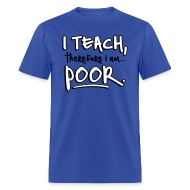Yesterday, for my science test, I gave the kids a blank sheet of notebook paper and asked them to write down the answers for five review questions at the end of the chapter we had read this week. The chapter was mostly about seeds -- what they contain and how they are spread.
Most of my kids did not understand the whole concept of an open book test. I told them that they could use their book to find the answers by looking back in the chapter we read. While some began flipping back pages to look for the answers, I saw one little girl looking forward into the chapter about lizards and birds. I'm pretty sure that chapter doesn't contain any information about germination or seedlings.
Yet I still saw many of them just making completely random guesses at the answers without using the book. Often, what they wrote didn't even make any sense or did not answer the question. For example, question one was, "What is a seedling?" Roughly twelve kids wrote, "A seedling lives inside every seed." That's nice, but it doesn't tell me what a seedling IS. Just finding a sentence with the word in it does not always answer the question. If I ask someone, "Did the Cowboys win this weekend?" hopefully they will not respond, "The Dallas Cowboys are a professional football organization, located in Irving, Texas."
But my favorite part of grading the tests came with question 3. The question was, "What are some ways that seeds can be spread from one place to another?" Some of the answers to this one really showed that the kids were listening when we were talking about this part. A lot of them copied the caption from the book about cockleburrs latching onto a dogs fur. But one girl took the idea of an animal carrying seeds, and applied it to an animal that isn't listed anywhere in our science book.
"If a jaguar finds an apple and he does not know what it is and he carries it to somewhere else."
Helpful jaguar!!
Another girl wrote, "Some animals can help people carry things." I went ahead and gave her credit for this answer, assuming that by "things," she meant "seeds."
But the best answers came from the kids who remembers our discussion of how birds help spread seeds. There was a picture of a bird standing on a branch that ended in a group of berries. The caption explained that birds eat the berries, swallow the seeds, and the seeds passed through the digestive system unharmed. And thus the bird drops the seeds in a faraway location.
So I got a couple of priceless answers to question 3:
"A bird can eat the seed and can poopoo in another place."
and
"A bird eats the seed and they did their business and the seed falls."
These kids clearly understood the concept! Mr. Bloom, you might need to add another level to your Taxonomy, because these kids are marching up the ladder!











3 comments:
I would have LOVED to have an open book test like that in my high school days. Alas, that's pretty much gone. Maybe it's because you couldn't point and click on the answers that they didn't get it. Good story, though ...
So, just to test this out I asked my 10th and 9th grade study hall class what the seedling question was asking for. Overwhelmingly, they said, "A definition."
But even at this level, two students complained and said that it was asking for a question that had the word "seedling" located in it. Some never learn.
Isn't it amazing how the kids think an open book test is harder than other tests?
Post a Comment